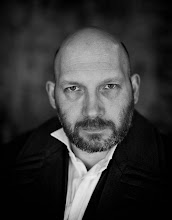 In the early part of the twentieth century the French writer and critic Georges Polti published his Thirty Six Dramatic Situations, a descriptive list which was created by to categorize every dramatic situation that might occur in a story or performance.
In the early part of the twentieth century the French writer and critic Georges Polti published his Thirty Six Dramatic Situations, a descriptive list which was created by to categorize every dramatic situation that might occur in a story or performance.The end result, arrived at by an intimate study of classical Greek texts, plus classical and contemporary French works, was a list of dramatic situations designed to aid writers in the construction of their work. By using the various situations either alone or in conjunction with one or several more, Polti sought to provide a solid analysis of fiction, rather than, say, a cast-in-stone check-list of exactly what needs to go into a story, novel or play.
Since then, there have been many, many books and articles written on the subject, some defining the basic number of dramatic situations still further (some claiming that there are only 20 basic plots, others lowering the number to 7, while Robert E. Heinlein famously declared that there are only 3: Boy Meets Girl/ The Little Tailor/ The Man Who Learns Better).
The general consensus of opinion over the years is that, regardless of which number you finally decide upon, the number of plots available to any writer are strictly limited. Add to this the constriction of genre and the number tends to drop even further.
Of course, all of this depends upon what exactly one regards plot as. In the classical detective novel or story the plot is generally thus: a crime has been committed and a detective is called in to solve the case. Taking this as an example, we can see that even such a limited plotline can encompass a wide range or writers and outcomes. The cerebral mysteries of Sir Arthur Conan Doyle, the two-fisted stories of Raymond Chandler or Dashiell Hammet, the cutting satire of Ross McDonald, the gritty police procedurals of Ian Rankin or Ed McBain or the genteel country house mysteries of Agatha Christie or Niago Marsh. Stretch a point and you also encompass the work of Len Deighton, John le Carré, Ian Fleming or Eric Ambler.
With fantasy fiction the field might seem to be a little wider, but with much fantasy the plot boils down to: the world is being threatened by evil and it is up to the hero, either alone or with companions, to fight and destroy it: The Lord of the Rings, the Elric Saga, David Gemmell’s Drenai and Sipstrassi novels, and any God’s amount of doorstop tomes that have the words ‘Book One of…’ emblazoned on them.
So, given that the field for any genre storyteller is rather narrow, what is best… style or substance? Is it better to enthrall the reader with beautifully written prose and dazzling imagery (al a Clark Ashton Smith or Mervyn Peake or Michael Moorcock at his most outlandish) or is it better to craft stories that fit together as beautifully as a finely made antique chair, where the basic plot might not be outstanding but the characters and their struggles draw the reader in and keep him reading (David Gemmell, for instance, was a master at creating believable, all-too human characters, but rather often his plots boiled down to ‘siege of the week’ – a flaw which never stopped his stories being anything other than compelling).
In an ideal world the answer is ‘both’. Novels such as Anthony Burgess’ ‘A Clockwork Orange’ manage to combine a literary aesthetic with a tightly focused series of events (take away the nadsat argot in the novel and it’s still a brilliantly told story). Whereas a novel such as Chandler’s ‘The Big Sleep’ loses sight of its original jumping off point (the death of the chauffeur) rather early on, without damaging either the story or the characters in any significant way.
Of course, all writers develop a style either consciously or unconsciously. The simple act of placing one word after another is unique to the individual and whereas the nuts-and-bolts of writing can be taught (there are, after all, literally hundreds if not thousands of books and articles on the subject) style is very much a matter of individual choice.
Style or substance? The choice is yours.


No comments:
Post a Comment